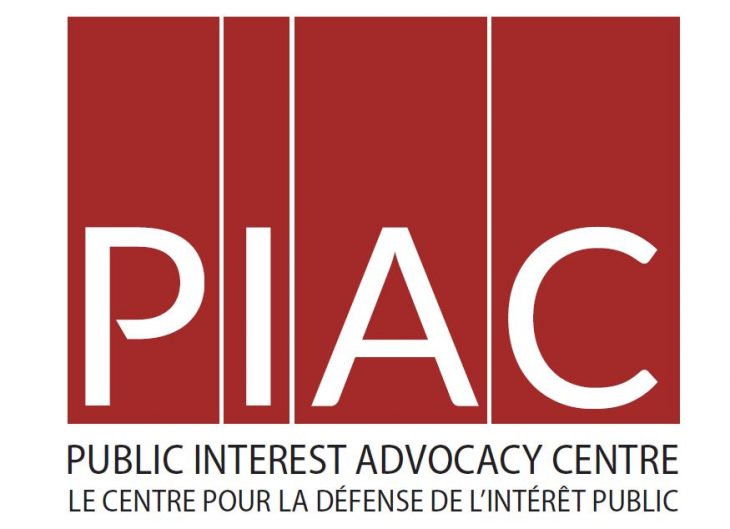
By John Lawford and Geoffrey White
JOHN KENNETH GALBRAITH WROTE: “Economics is extremely useful as a form of employment for economists.” Case in point: even though the 700 MHz auction is over, and most of the AWS new entrants have been swallowed up by the Big Three, or are about to be, business appears to still be thriving for some economists intent on knocking the Government’s attempts to instill more competition in Canada’s wireless sector.
For the most part these type of reports offer a paternalistic, if not patronizing, view of the consumer interest. The story, or at least the implied one, reads like this: Canadians should be happy we’ve invested billions of dollars in our networks and Canadians pay high fees because of their use of their wireless mobile phones. “It’s not us, it’s you” is the message in between the lines. More explicitly one economist wrote that “[W]hat everybody knows is wrong.”
The fundamental problem with economists’ reports defending the status quo is that they dare not to descend from the ivory tower to ask whether consumers: feel they are being well served; feel that they have access to competitive alternatives; and feel that their service providers are being fair. Moreover, few provide hard evidence that the Big Three actually compete – yes, compete – with one another, particularly on price. The reality in which Canadians now find themselves is one of rising wireless prices (which are now being blamed on the Wireless Code), less choice and fewer entry-level options.
The most recent iteration of such a report is titled “The State of Competition in Canada’s Telecommunications Industry”, co-authored by Messrs. Masse and Beaudry of the Montreal Economic Institute. The co-authors, who happen to also have been senior policy advisors to the Minister of Industry responsible for the Policy Direction, are a touch late to the debate that has occurred in the field since the policy and technical framework consultations for the 700 MHz auction began several years ago. (Perhaps, though, just in time for the CRTC’s review of wholesale wireless services.)
Nevertheless, they tell the same, tired story that reads like this: the Government and its regulators got it all wrong; there’s no competition problem in Canadian wireless; it’s inefficient to mandate four players in every market; measures to promote competition are an inefficient allocation of resources; short-term price changes are not a reliable indicator of efficiency; and consumers are mistaken about their perceptions that wireless prices are too high. The interesting, ironic twist of this paper is that it dresses preservation of the status quo (oligopolistic market power) as the entry-point to “dynamic competition”, as opposed to “static competition”.
The fundamental problem with the latest report is that its authors dogmatically present market forces as the only thing that should discipline inherently anti-competitive industries – the only check that Canadians need to ensure their needs are well-served.
This report was co-authored by the same economist who recently, at the Law Society of Upper Canada’s Biennial Communications Law and Policy Conference, suggested that PIAC (or by extension any other pro-consumer organization) is categorically anti-competition and pro-regulation, and that the CRTC itself should be disbanded and may be seen solely as an institution that exists to create work for itself.
We encourage readers to review our assessment of the role market forces and competition are meant, in law, to play in serving the needs of Canadians. The point of the paper, its thesis, is that consumers are the centre of Canadian communications law and policy, and that legal and regulatory tools exist that allow the CRTC to intervene to ensure fair treatment and fair rates for consumers.
The premise therefore of our approach to regulation is straightforward – treat consumers fairly and give them access to high quality services at reasonable rates, while ensuring that the interests of marginalized Canadians can also be served well. If this can be achieved by market forces then we fully support the direction of the market, but show us the compelling proof that the variety of Canadians who need access to these services are having their needs met.
“So the message from those supposedly neutral intellectuals and pundits who have curiously taken up the role of defending the status quo is rather fatalistic: the government got it wrong, and therefore should back off in the future.”
In the view of authors from the Montreal Economic Institute, no such proof is required. Canadians should be resigned to what we’ve got today: we should have blind faith that regulatory measures are not necessary to ensure a better operating market. Further, in the absence of any competitive discipline through regulation, market forces alone will persuade the Big Three as rational economic actors to ignore the impulse to leverage their market power (a concept recently challenged by the Competition Bureau).
So the message from those supposedly neutral intellectuals and pundits who have curiously taken up the role of defending the status quo is rather fatalistic: the government got it wrong, and therefore should back off in the future. While we don’t disagree that mistakes have been made – for example that the file was wrongly politicized, or that some regulatory change came later than it should have – we do not think resignation to “the way things are” is the prudent path forward. Instead, that fatalism abandons consumers– especially low-income and vulnerable consumers – to the Big Three as they go “upmarket” and force consumers into bigger and more expensive mobile plans.
This type of fatalistic thinking was as much as admitted recently at a conference by a Rogers executive and by an AWS new entrant – the dream of competitive entry is a non-starter in the current marketplace. The barriers to entry are too high, said the former. The government messed it up and didn’t act quickly enough, said the latter. Fair points from “inside” voices, but insufficient, as are the seemingly incumbent-oriented economics papers, as a reason to simply give up in the future a market for new entrants, leaving Canadians to deal alone with the retrenchment and rising prices of the Big Three.
What we say in response to all of this is simple: competition can indeed be a positive force, and market forces can indeed deliver competition. We don’t prejudge that, but we want evidence of lower prices and more choice between differentiated service offerings for Canadian consumers. Market forces unchecked, a situation we are at the precipice of, can result in what neutral economists might call rent-seeking or monopoly profits, but what consumers feel as price gouging and paying more for less.
We prefer an evidence-based, consumer-centric approach to the promise of market forces. Not cynical or pre-judgmental defenses of the status quo but simply an openness and commitment to fair treatment of consumers. Communication services are far too important to assume market forces will always ensure the public is well-served. This is a form of responsible policy making, to “trust but verify”, and it’s what Canadians deserve from their Government and from their communications regulator.
The only interests served by ceding to ongoing calls (and legal challenges) to neutralize the CRTC and blindly put all our faith in market forces alone are those of the service providers. A broader perspective is needed, one in which not just a theoretical market is considered, but real consumers are valued.
John Lawford is executive director and general counsel, PIAC and Geoffrey White is barrister & solicitor, counsel to PIAC.



